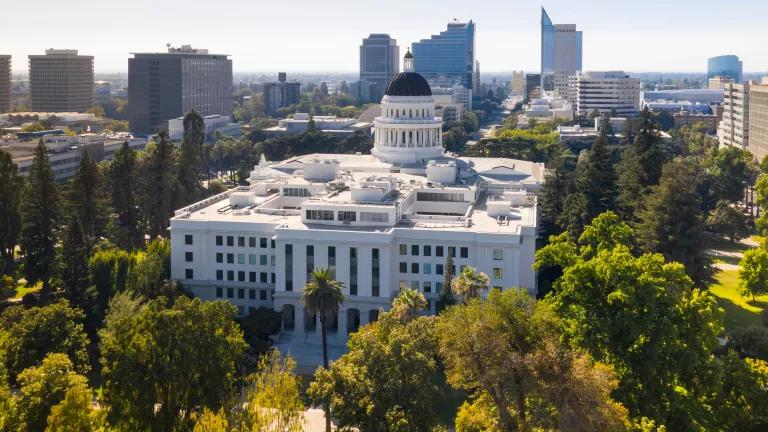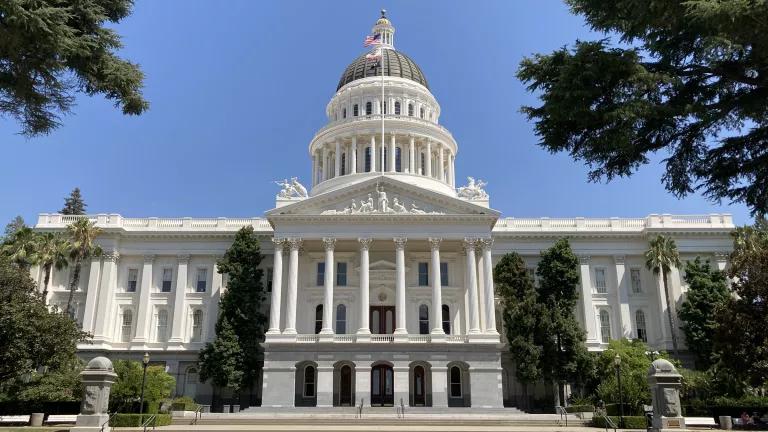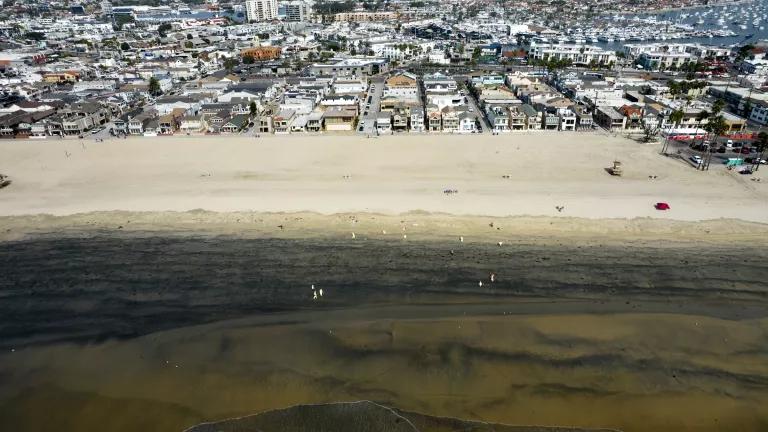There is a growing debate over whether and how to “modernize” California’s bedrock environmental review law, the California Environmental Quality Act (CEQA). Industry critics say that the law generates too much litigation, restricting growth in the state. Along with my colleague, longtime CEQA attorney Tom Adams of the California League of Conservation Voters, I took a look at the CEQA litigation record, wading through the numbers of CEQA lawsuits over the statute’s 42-year history. We wanted to cut through the anecdotes to get to the actual numbers. What we found was that the overwhelming number of CEQA reviews for projects do not end up in court and of the very few that do, those cases make up a tiny portion of the litigation that makes its way through California’s courts each year. A copy of our new analysis, the CEQA – The Litigation Myth, can be found here.
CEQA has protected California’s rich natural resources and the public health of its citizens since 1970, Governor Reagan signed the legislation into law after it passed both houses with bipartisan support following the disastrous Santa Barbara oil spill of 1969. That single event alerted residents and the nation to the harmful effects that playing loose with the environment will cause.
CEQA has been updated many times over the years. To this day, CEQA plays an important role in ensuring that public agencies consider and mitigate environmental impacts that are not addressed adequately, or at all, by existing laws. It has repeatedly been used where there are gaps in other environmental laws, where special interests carved out exceptions for themselves, where industry delayed the adoption of new standards for years or even decades, and where the standards under other laws are too weak to protect public health.
CEQA works by requiring public agencies to consider the environmental effects of projects on the environment and to avoid or reduce significant effects to the extent feasible. The end result of this process is typically a requirement for a project to adopt measures to reduce impacts and protect the environment and public health.
There is no state bureaucracy that enforces CEQA. CEQA is typically only enforced by citizens going to court. A thorough look at the numbers compiled by the California Attorney General’s office reveals that court challenges under CEQA are rare. Roughly 200 CEQA cases are filed each year.
- Only about 1% of projects in California that are subject to CEQA wind up in litigation.
- Of the roughly 1,100,000 total civil cases filed in California, CEQA cases represent only 00.02%.
CEQA critics claim that just the threat of CEQA litigation creates an unacceptable risk for project developers. But the numbers do not support this argument. A review of these cases shows that the courts often rule against project applicants and local agencies seeking to avoid environmental disclosure or mitigation.
Some of the California Environmental Quality Act’s Greatest Accomplishments include:
- Protecting Californians from many tons of toxic air pollution and related health effects, such as childhood asthma. CEQA played a principal role in the electrification of the Port of Los Angeles, making it the cleanest port in the country, improving the working conditions for truckers and health of nearby communities
- Creating the Cornfield and Taylor Yards State Parks, in park-poor, minority and low income neighborhoods of Los Angeles.
- Protecting our coast and tourism based coastal economy from offshore oil drilling.
- Preserving the Santa Monica Mountains.
- Protecting ancient redwoods in the Headwaters forest.
- Improving hundreds of developments to fit in better with their communities.
- Protecting workers from construction sites contaminated with toxic chemicals.
- Protecting groundwater from over drafting.
- Keeping sewage out of the San Francisco Bay and Newport Bay.
CEQA is the primary state law requiring public officials to understand and consider the environmental consequences of their decisions before they make them. CEQA also ensures that public agencies consider and mitigate important environmental impacts that are not addressed adequately by existing laws. Yet, because of its power, it is also controversial. As legislative discussions continue, we’ll be there to remind our elected officials of the decades of good that CEQA has brought to our state, and to consider how our cities, workplaces and landscapes would look if developers and industry were left to run amok, profiting by polluting California.



